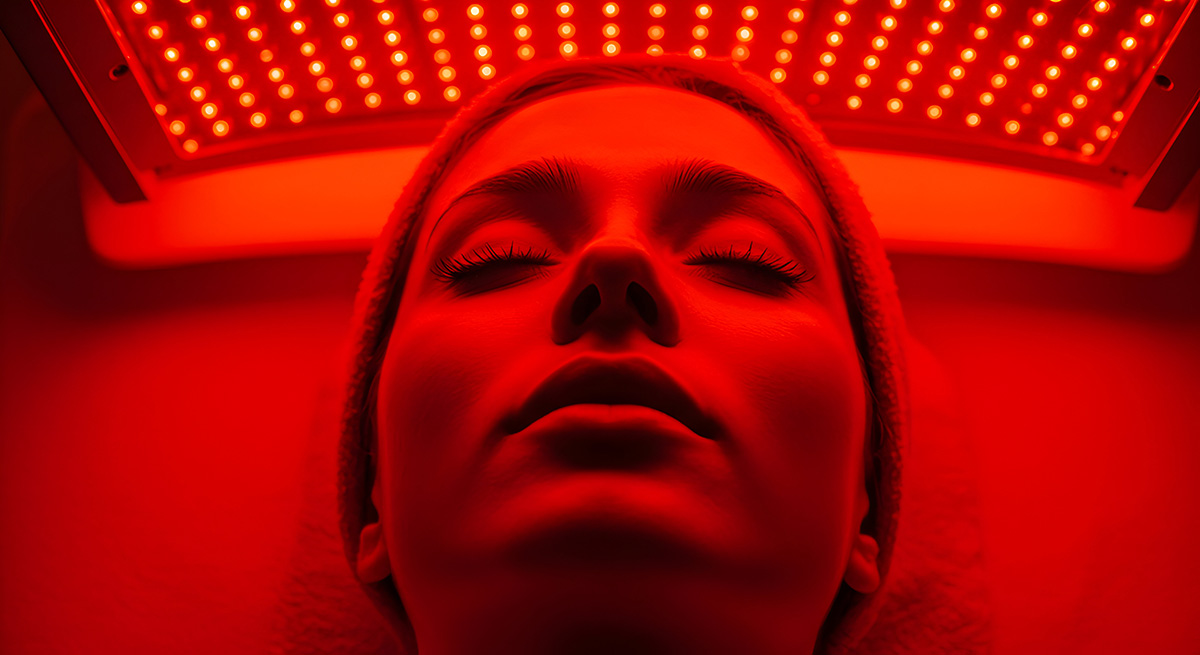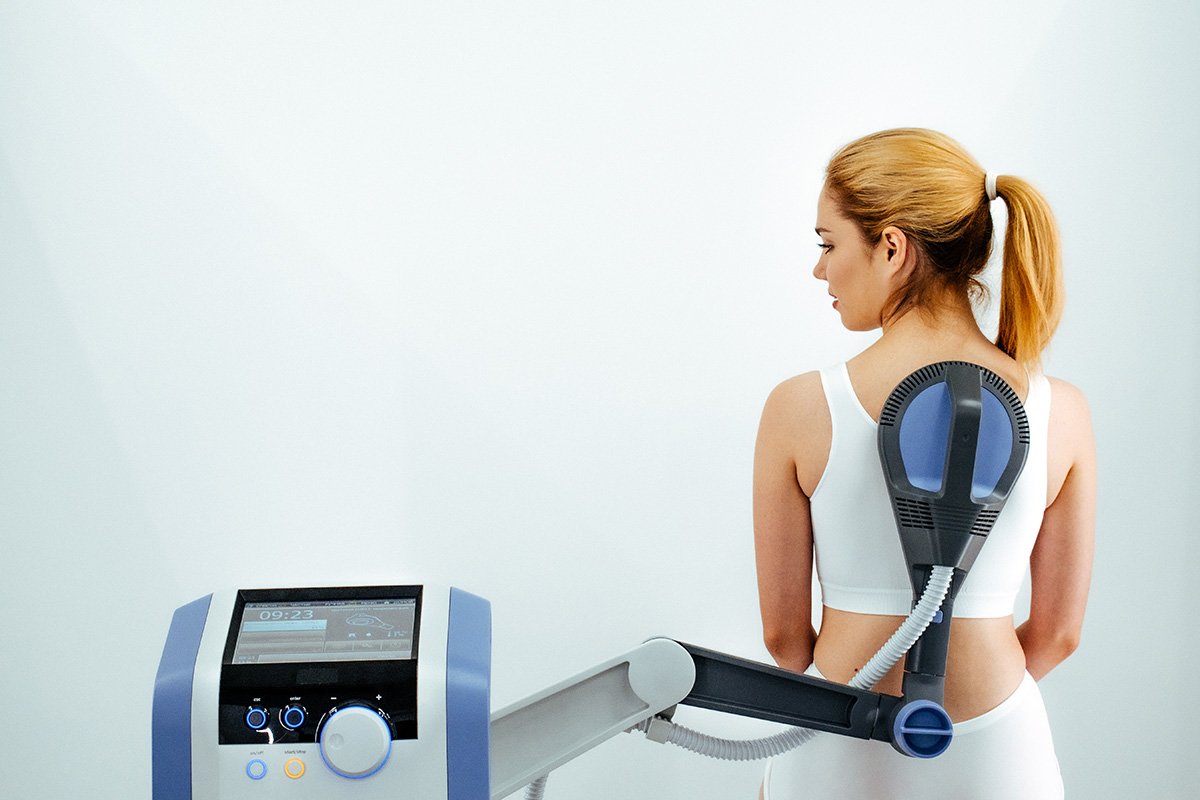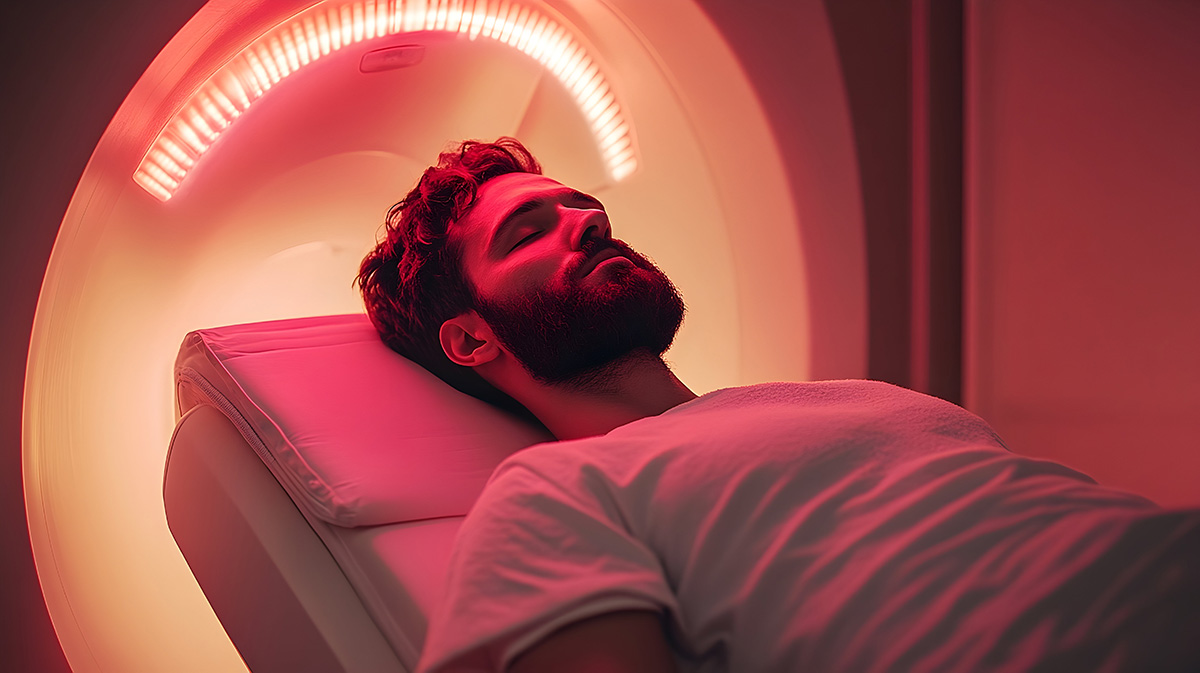
In the realm of alternative and complementary medicine, two therapies are gaining significant attention for their potential to promote healing, reduce pain, and optimize wellness without the use of pharmaceuticals or invasive procedures: Red Light Therapy (RLT) and Pulsed Electromagnetic Field Therapy (PEMF). Both modalities tap into fundamental forces of nature—light and electromagnetism—to stimulate the body’s natural ability to repair and regenerate. While each therapy works differently, they share a common goal: improving cellular function and overall well-being.
This article explores the science, applications, and health benefits of red light therapy and PEMF therapy, and examines how these modalities may work synergistically to optimize health.
Understanding Red Light Therapy
What is Red Light Therapy?
Red Light Therapy, sometimes referred to as low-level laser therapy (LLLT) or photobiomodulation, involves exposing the body to specific wavelengths of red and near-infrared light (typically between 600–1000 nanometers). Unlike ultraviolet light, which can damage the skin, red and near-infrared light penetrate tissues safely, reaching cells, muscles, joints, and even bones.
RLT is typically administered via LED panels, handheld devices, or laser systems that deliver light at therapeutic wavelengths. These devices emit non-thermal photons, which the cells absorb, triggering a cascade of biological processes that support healing and rejuvenation.
The Science Behind Red Light Therapy
At the cellular level, red and near-infrared light primarily interacts with mitochondria, the “powerhouses” of cells. Specifically, light photons are absorbed by an enzyme called cytochrome c oxidase, which plays a critical role in the mitochondrial respiratory chain. This absorption increases the production of adenosine triphosphate (ATP), the energy currency of the cell.
Higher ATP availability enables cells to function more effectively, repair themselves, and withstand stress. In addition, RLT can modulate oxidative stress, reduce inflammation, and stimulate the production of collagen and other growth factors.
Benefits of Red Light Therapy
1. Skin Health and Anti-Aging
One of the most popular uses of RLT is in dermatology and skincare. Research shows that red light stimulates collagen production, improves blood circulation, and enhances the repair of damaged tissues. This leads to reduced wrinkles, improved skin tone, and faster healing of scars and wounds.
2. Pain and Inflammation Reduction
By modulating inflammatory markers and improving circulation, RLT has been shown to alleviate chronic pain conditions such as arthritis, tendinitis, and joint pain. The therapy reduces oxidative stress, helping the body recover from injury or inflammation more efficiently.
3. Muscle Recovery and Athletic Performance
Athletes use red light therapy to accelerate muscle recovery after workouts. Studies suggest that RLT reduces delayed-onset muscle soreness (DOMS), enhances mitochondrial function, and supports muscle growth, making it valuable in sports performance.
4. Wound Healing
RLT accelerates tissue repair, making it a powerful tool for wound healing. It has been used in clinical settings to support the recovery of burns, surgical wounds, and ulcers.
5. Mental Health and Cognitive Function
Recent studies show that near-infrared light, when applied transcranially, may improve brain function by increasing blood flow and ATP production in neurons. This has potential applications in managing depression, anxiety, traumatic brain injury (TBI), and even neurodegenerative conditions such as Alzheimer’s.
6. Hair Growth
RLT is also FDA-cleared for treating hair loss in androgenetic alopecia. By stimulating follicles and improving blood flow to the scalp, red light may support hair regrowth.
Understanding PEMF Therapy

What is PEMF Therapy?
Pulsed Electromagnetic Field Therapy (PEMF) is a non-invasive treatment that uses low-frequency electromagnetic fields to stimulate cellular repair and restore optimal function. Unlike static magnets, PEMF devices deliver pulsed energy waves that penetrate tissues, organs, and bones, influencing the body at a cellular level.
The therapy is delivered via mats, paddles, or wearable devices that emit pulsating electromagnetic fields at specific frequencies and intensities.
The Science Behind PEMF Therapy
Cells maintain a delicate electrical balance across their membranes, essential for nutrient transport, waste removal, and communication. Over time, stress, injury, and illness can disrupt this balance, impairing cellular function. PEMF therapy works by restoring electrical potential to cells, helping them maintain homeostasis and function optimally.
PEMF has been shown to:
- Improve cellular energy (by increasing ATP production).
- Enhance circulation and oxygenation.
- Modulate inflammation and reduce pain.
- Stimulate the repair of bones, nerves, and tissues.
Benefits of PEMF Therapy
1. Bone Healing and Regeneration
One of the earliest FDA-approved uses of PEMF was for the treatment of non-union bone fractures. Clinical studies have confirmed that PEMF accelerates bone healing, enhances mineralization, and reduces recovery time in orthopedic conditions.
2. Pain Relief and Anti-Inflammatory Effects
PEMF reduces pain by influencing pain-signaling pathways, reducing inflammation, and increasing endorphin release. It has applications in arthritis, fibromyalgia, and chronic pain syndromes.
3. Enhanced Circulation and Oxygenation
By dilating blood vessels and improving microcirculation, PEMF enhances oxygen delivery to tissues, accelerating healing and reducing swelling.
4. Nerve Repair and Neuroprotection
Studies suggest that PEMF supports nerve regeneration, making it valuable in conditions such as neuropathy or after nerve injury. Its neuroprotective effects may also help in neurodegenerative diseases.
5. Improved Sleep and Stress Reduction
PEMF may improve sleep by regulating brainwave activity and supporting the production of melatonin. Many users report deeper, more restorative sleep after consistent use.
6. Immune System Support
By optimizing cellular function and circulation, PEMF therapy can enhance the immune system’s ability to fight infections and maintain resilience.
Comparing Red Light Therapy and PEMF
While both RLT and PEMF target cellular health, they do so through different mechanisms:
- RLT: Works primarily through light photons absorbed by mitochondria, boosting ATP production and stimulating tissue repair.
- PEMF: Works through electromagnetic fields, restoring cellular electrical balance and improving circulation and energy transfer.
Both therapies share overlapping benefits, such as reducing inflammation, supporting healing, and improving energy levels. However, their unique mechanisms make them complementary rather than redundant.
Synergistic Benefits of Combining RLT and PEMF

When used together, red light therapy and PEMF therapy may provide synergistic benefits. For example:
- Enhanced Healing: RLT boosts cellular energy, while PEMF optimizes circulation and nutrient delivery, creating an ideal environment for tissue repair.
- Pain Management: Both therapies reduce pain and inflammation through different pathways, providing stronger combined relief.
- Neurological Health: RLT improves neuronal energy metabolism, while PEMF supports nerve repair and regulates brain activity, potentially offering powerful benefits for brain health.
- Athletic Performance: Athletes using both modalities may experience faster recovery, better performance, and reduced risk of injury.
Practical Applications and Accessibility
Both therapies are becoming increasingly accessible to consumers. Portable RLT panels and PEMF mats are now available for home use, making it possible for individuals to incorporate these modalities into their daily routines. Clinics, wellness centers, and sports facilities are also integrating both therapies into treatment protocols.
However, it’s important to note that effectiveness depends on parameters such as wavelength, frequency, intensity, and duration. For optimal results, devices should be selected based on scientific validation and appropriate therapeutic ranges.
Safety Considerations
Both red light therapy and PEMF therapy are generally considered safe and non-invasive with minimal side effects.
- RLT: Side effects are rare but may include mild redness or temporary discomfort if overused. Protective eyewear is recommended when using high-intensity devices.
- PEMF: Safe for most people, though those with pacemakers, implanted electronic devices, or who are pregnant should avoid use without medical advice.
The Future of Red Light and PEMF Therapies
The growing body of scientific research continues to validate and expand the applications of RLT and PEMF. Emerging studies are exploring their roles in:
- Neurodegenerative disease management (Alzheimer’s, Parkinson’s).
- Regenerative medicine, including stem cell activation.
- Integrative cancer care, for symptom relief and quality of life.
- Performance optimization in elite athletes.
As technology advances, more precise, effective, and accessible devices are being developed, opening new frontiers in medicine and wellness.
Conclusion
Red Light Therapy and PEMF Therapy represent two of the most exciting frontiers in non-invasive, energy-based healing. By leveraging natural forces of light and electromagnetism, these therapies empower the body to heal itself, improve resilience, and enhance performance.
While each modality offers profound benefits independently, their combination may represent a powerful synergistic approach to wellness—addressing pain, inflammation, circulation, cellular energy, and mental health holistically.
As research continues and accessibility increases, red light therapy and PEMF are poised to become essential tools in modern health optimization, bridging the gap between traditional medicine and natural healing.

Lee Schwalb is a licensed acupuncturist in New York City with over 20 years of clinical experience, treating a broad range of health issues, from idiopathic pain and acute injuries to stress, anxiety and many other conditions.

